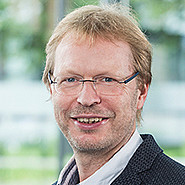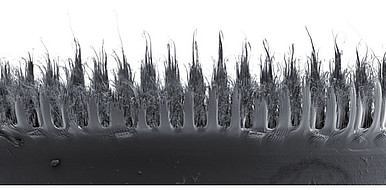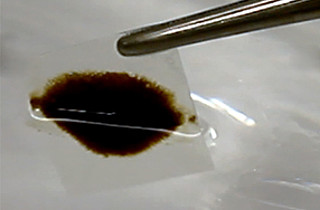Nanofur separates oil from water
After accidents of oil tankers or oil platforms, environmentally compatible separation of oil and water is a big technical challenge.
State of the art
To remove the oil film, various methods are being applied at the moment: Combustion of the oil and accelerated natural decomposition by the addition of dispersing agents cause environmental pollution and health risks. Whenever possible, the oil film is therefore skimmed off. Often, natural materials are used for the separation of the oil-water emulsion, such as sawdust. Sawdust, however, absorbs more water than oil and, hence, is hardly effective. Alternative, commercially available materials, such as foams or polypropylene mats, take up large amounts of oil, but are easily inflammable, unstable, or they do not retain the oil for a sufficiently long period of time.
Technology
Scientists of the KIT Institute of Microstructure Technology (IMT) have now developed a new approach for the effective separation of oil and water. The "nanofur" is based on a variant of the "Salvinia® effect" studied by KIT. This effect is based on a special arrangement of microstructures, as a result of which the leaves of the water fern Salvinia remain dry under water. On a plastic foil, KIT scientists produced a similar surface and modified its structure such that oil is absorbed and water is repelled. For this purpose, plastic microhairs are distributed heterogeneously around craters on the surface. The complete area of the polymer foil can be used for oil-water separation. Fabrication of the mold insert needed for the production of the nanofur is relatively easy and may be accomplished on a large scale.
Advantages
To produce the steel mold, a steel plate is subjected to sand blasting for the generation of small craters with sizes in the micrometer and nanometer range. A polymer foil is placed into the molding tool. Then, the steel mold is heated. When it is removed in the heated state, the hot plastic draws threads. In this way, the nanofur required is produced.
Options for companies
The KIT is working on a prototype and looks for partners for product development.
Your contact person for this offer

Innovation Manager Karlsruhe Institute of Technology (KIT)
Innovation and Relations Management (IRM) Phone: +49 721 608-25587
Email: rainer.koerber@kit.edu


